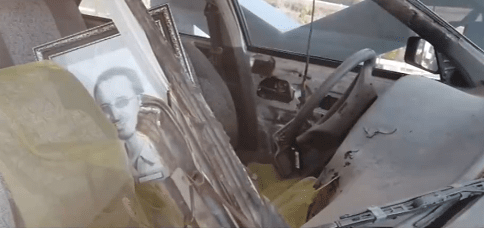On November 27, Fakrizad, an important Iranian nuclear physicist, was assassinated near Tehran, the capital of Iran.
More than two weeks after the assassination, what is the scene of Fakrizad’s murder like now? Can people come to the scene to find traces left over from the assassination? Next, let’s follow the reporter’s footsteps to find out.
Fakrizad was assassinated on a highway in the small town of Abersad. On November 27, he drove from Mazandaran Province to Tehran with 11 Revolutionary Guard Guards. Fakrizad’s son said in a later interview that the security personnel had warned him of the high risk of traveling that day, but because of an important meeting in Tehran, Fakrizad still insisted on traveling, resulting in assassination while traveling here.
The assassination was carried out in a car. A total of 13 bullets were fired from the machine gun in the car. Finally, the car exploded to kill the guards at the scene. Fakrizad was seriously injured in the attack and taken to the hospital. After unsuccessful treatment, he died.At present, the highway has returned to normal traffic, but the media still needs to go through strict approval to interview here.
Chief Taiwan reporter Li Jiannan: Two weeks later, we also obtained the permission of the Iranian government for the first time to come to the scene of the assassination.
Now the road cleaning has been completed, but you can still see many burnt marks, which come from the explosion of the day. According to Iran’s Islamic Revolutionary Guard Corps, the weapon in the assassination of Fakrizad was installed in the vehicle that exploded that day. It was a fully automatic satellite-controlled machine gun.
This is the nearest tree to the assassination scene. One side of the tree is intact, but the other side can clearly see the burnt traces, as well as a scratch of shrapnel.
The farm next to it was also damaged by its fence, and the sign fell to the ground.
The puddles and mottled and peeling traces of telephone poles on the road tell the tragedy of the assassination. At the scene, there is also a banner with photos of Fakrizad and the words “the place where scientists died”, and a row of small photos next to them are four Iranian nuclear scientists – Masood Ali Muhammadi, Majid Shariari and Dalio – who were assassinated between 2010 and 2012.
Shei Rezai Ahmadinejad and Mustafa Ahmedi Roshan. There are also many banners commemorating Fakrizad on the streets of Tehran, and the vehicles in which other assassinated scientists were taken at the time of the incident were treasured in museums to remind people of their sacrifices.
General Station reporter Li Jiannan: This is the Iranian Holy Defense Museum. In the most prominent position at the gate, there are several incomplete vehicles parked, which also witnessed the assassination moments.
The owners are all Iranian nuclear scientists without exception. The recent assassination in Iran and the death of Fakrizad have plunged the situation in the whole Middle East into a haze again. And then, how things will develop is also a question that all parties concerned need to deal with carefully.



